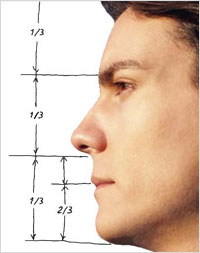
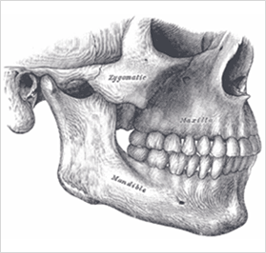
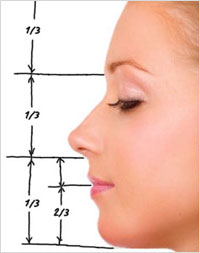
Relationship between mandible and maxilla
Orthognathic Surgery is surgery to correct conditions of the jaw and face related to structure, growth, sleep apnea, TMJ disorders, correct malocclusion problems owing to skeletal disharmonies or other orthodontic problems that cannot be easily treated with braces. Bones can be cut and re-aligned, held in place with either screws or plates and screws.
Indications
>> Gross jaws discrepancies (Anteroposterior , Vertical and /or Transverse discrepancies)
>> Facial skeletal discrepancies associated with documented sleep apnea, airway defects, and soft tissue discrepancies.
>> Facial skeletal discrepancies associated with documented temporomandibular joint pathology.
Surgeon
Orthognathic Surgery is performed by either an oral and maxillofacial surgeon or a craniofacial surgeon in collaboration with an orthodontist, often including braces before and after surgery, and retainers after the final removal of braces. Orthognathic surgery is often needed after reconstruction of cleft palate or other major craniofacial anomalies. Careful coordination between the surgeon and orthodontist is essential to ensure that the teeth will fit correctly after the surgery. This coordination often necessitates that the surgeon be trained in dentistry, where complex concepts of occlusion between upper and lower teeth are taught. Unlike Oral and Maxillofacial Surgeons who are trained in dentistry, Plastic Surgeons receive no or minimal training. Thus, it is rare that an Orthodontist would find it appropriate for the surgery to be referred to a non-Oral and Maxillofacial Surgeon.
Planning
Planning for the surgery usually involves input from a multidisciplinary team. Involved professionals are Oral and Maxillofacial surgeons, Orthodontists, and sometimes a Speech and language therapist. As the surgery usually results in a noticeable change in the patient's face a psychological assessment is occasionally required to assess patient's need for surgery and its predicted effect on the patient.
Radiographs and photographs are taken to help in the planning and there is software to predict the shape of the patient's face after surgery,which is useful both for planning and for explaining the surgery to the patient and the patient's family. Advanced software can allow the patient to see the predicted results of the surgery.
The main goals of orthognathic surgery are to achieve a correct bite, an aesthetic face and an enlarged airway. While correcting the bite is important, if the face is not considered the resulting bony changes might lead to an unaesthetic result. Orthognathic surgery is also available as a very successful treatment (90-100%) for obstructive sleep apnea. Great care needs to be taken during the planning phase to maximize airway patency.
Procedure
The surgery might involve one jaw or two jaws during the same procedure. The modification is done by making cuts in the bones of the mandible and / or maxilla and repositioning the cut pieces in the desired alignment. Usually surgery is performed under general anaesthetic and using nasal tube for intubation rather than the more commonly used oral tube; this is to allow wiring the teeth together during surgery. The surgery often does not involve cutting the skin, and instead, the surgeon is often able to go through the inside of the mouth.
Cutting the bone is called osteotomy and in case of performing the surgery on the two jaws at the same time it is called a bi-maxillary osteotomy (two jaws bone cutting) or a maxillomandibular advancement. The bone cutting is traditionally done using special electrical saws and burs, and manual chisels. Recently a machine that can make the bone cuts using ultra-sound waves has been introduced; this is yet to be used on a wide scale. The maxilla can be adjusted using a "Lefort I" level osteotomy (most common). Sometimes the midface can be mobilised as well by using a Lefort II, or Lefort III osteotomy. These techniques are utilized extensively for children suffering from certain craniofacial abnormalities such as Crouzon syndrome.
The jaws will be wired together (inter-maxillary fixation) using stainless steel wires during the surgery to ensure the correct re-positioning of the bones. This in most cases is released before the patient wakes up. Some surgeons prefer to wire the jaws shut.
Complications
Like any other surgery, there can be some complications like bleeding, swelling, infection, nausea and vomiting. There could also be some numbness in the face due to nerve damage. The numbness may be either temporary, or, more rarely, permanent. In general, complications of this surgery occur, but not frequently.
If the surgery involves the upper jaw, then the surgery could have an effect on the shape of the patient's nose. This can be minimised by careful planning and accurate execution of the surgical plan. Sometimes, this is considered part of the benefit.
Post operation
After orthognathic surgery, patients are often required to adhere to an all-liquid diet. After time, soft food can be introduced, and then hard food. Diet is very important after the surgery, to accelerate the healing process. Weight loss due to lack of appetite and the liquid diet is common, but should be avoided if possible. Normal recovery time can range from a few weeks for minor surgery, to up to a year for more complicated surgery.
For some surgeries, pain may be minimal due to minor nerve damage and lack of feeling. Doctors will prescribe pain medication and prophylactic antibiotics to the patient. Most of the swelling will disappear in the first few weeks, but some may remain for a few months.
The surgeon will see the patient for check-ups frequently, to check on the healing, check for infection, and to make sure nothing has moved. The frequency of visits will decrease over time. If the surgeon is unsatisfied with the way the bone is mending, he may recommend additional surgery to rectify whatever may have shifted. It is very important to avoid any chewing until the surgeon is satisfied with the healing.
Dental Care
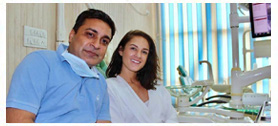
Regular dental care is an important part of oral health. Having healthy teeth and gums isn't a given, though.

Dental Tourism
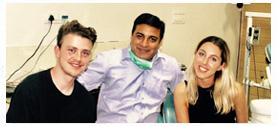
Our dental tourism packages, transport you to the world of royalty in all its regal splendor. An experience of a lifetime awaits you...

Brushing your teeth

Your teeth are meant to last a lifetime! Tooth decay, or cavities, and periodontal disease, also known as gum disease, can ..

Oral Health Problems

If one or more of your teeth are missing, there are a number of ways to replace them. An alternative to bridges, partials or complete...

Patient Gallery
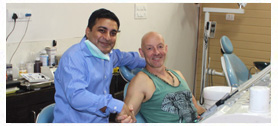
Here's just a few "before-and-after" photos of some of our most common procedures. Come in and see how we can enhance your smile.


